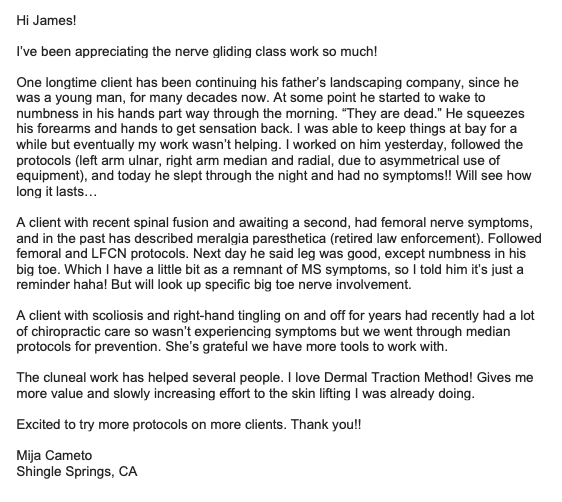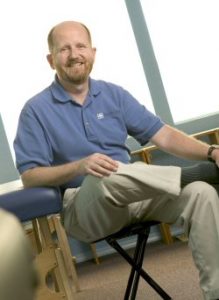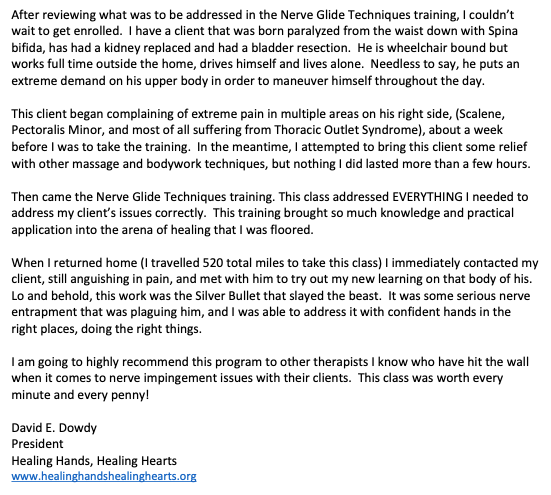Nerve impingement issues can mimic musculoskeletal problems. Some examples are tennis elbow (lateral epicondylitis) which may be from entrapment of the radial nerve, or Iliotibial band tightness or pain from an impingement of the lateral femoral cutaneous nerve.
In this workshop, you will learn ways to assess if a problem is from nerve impingement and easy and effective ways to relieve nerve impingement by using movement to tension and glide the nerve along its path.
For the upper extremity, we will cover the assessment of nerve impingement problems, differentiating between median, ulnar, and radial nerve impingement syndromes. We will then work with impingement areas for the brachial plexus, including the nerve roots, scalenes, first rib and clavicle, and pectoralis minor. This will be followed by specific work for impingement areas in the upper extremity for the median, ulnar and radial nerves. We will follow with neurodynamic work, or nerve gliding, to move the affected nerves through their channels to help improve nerve function, then reassess to note what improvement has occurred.
We will do similar work for the lower extremity, assessing impingement problems with the sciatic, tibial, peroneal, femoral, and obturator nerves. We will work with the low back, piriformis, psoas, and iliacus before working with specific areas of impingement for the nerves in the lower extremity. We will follow this with neurodynamic work and assessment.
We will also work with assessing and treating the impingement of cutaneous nerves with specific pain patterns, including the lateral femoral cutaneous nerve, cluneal nerves, and the pudendal nerve.
Extensive notes will be given in this class. After completing the class, you should be able to help more of your clients with nerve impingement problems.
Please bring shorts and a sports bra for women.
Download a flyer to post at your workplace or share with your colleagues
Early Bird pricing until Feb 28 Member $ 79 and Non-member $119
registration link: https://cvent.me/Zvkxoa
summary link: https://cvent.me/okVeoy


 Dr. James Mally is a massage teacher, educational content producer, and creator of MassageLibrary.com. He has been doing massage professionally since 1976 and teaching massage classes since 1979. His initial training was a 1000-hour massage program at
Dr. James Mally is a massage teacher, educational content producer, and creator of MassageLibrary.com. He has been doing massage professionally since 1976 and teaching massage classes since 1979. His initial training was a 1000-hour massage program at 
